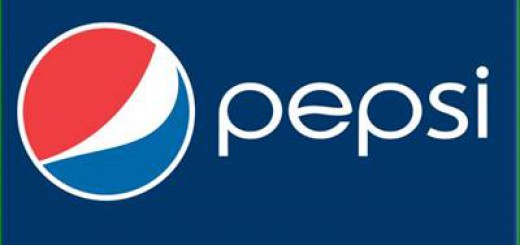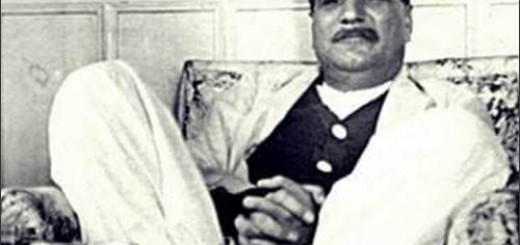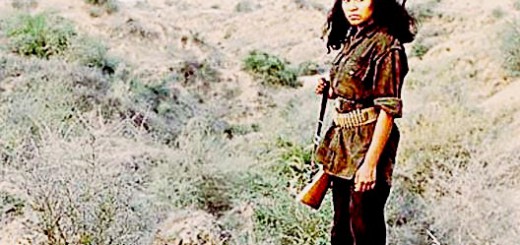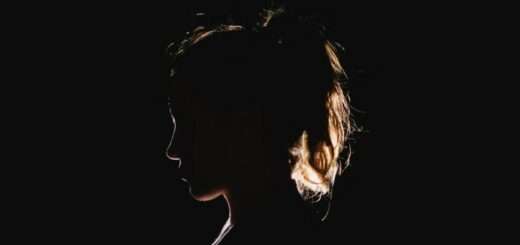Reckitt Benckiser Pakistan: MBA/BBA Report
Reckitt Benckiser Pakistan: MBA/BBA Report
The year 1999 has been an exceptionally challenging year for the company. Recessionary conditions continued, consumer purchasing power kept on declining and significant reduction of distributor and trade stock levels of the company’s products was made to fall in line with consumer demand levels. As a consequence, the company’s sales decreased by 21.1% over the previous year, with almost all major categories showing the contraction.
Given the social, economic and political realities, and being unable to wait any further, the company developed and put into effect a major cost saving program mainly through restructuring and right sizing. Unfortunately, this leads to a sizable reduction in the number of employees in the business. Whilst the benefits of this program are significant and will impact from year 2000, the element of staff severance costs which have been charged to the 1999 accounts to a total of Rs. 146.5 million.
Due to the above factors together with inflation, and because now for almost three years no price increases have been allowed for pharma products by the Government, the Company incurred an Operating loss of Rs. 170.3 million (Rs. 34.8 million loss at the end June 1999) against an operating profit of Rs. 252.1 million last year and the peak operating profit delivered of Rs. 293 million in 1997. After tax profit for the year was negative Rs.215.7 M against a favorable Rs. 112.8 M in 1998. The board therefore, has not recommended the payment of dividend in view of the adverse results.
During the year, the Govt. directed the company to educe the selling prices of some of its major decontrolled drugs; the company filed a suit against this order in the high court of Sind. The honorable high court of Sind granted a
temporary stay in favor of the company that is still continuing. The issue of sales tax on Dettol antiseptic liquid pertaining to prior periods is pending with the sales tax tribunal. Unfortunately, the delaying tactics of sales tax department have prevented a final resolution of the issues. A new demand raised by the sales tax authorities during the year on Dettol of a total value of Rs. 241 M was contested and successfully quashed. However, based o a totally untenable view the department has re-raised a part of this demand that is currently being contested.
YEAR 2000 AND COMPUTER
The company entered the millennium with all hardware, plant, systems and processes intact and unaffected.
MAJOR SHAREHOLDERS
During the year Reckitt & Colman plc, UK, the company’s major shareholders, and Benckiser N.V., the Netherlands, merged to form a new company- Reckitt Benckiser plc, UK.
PROSPECTS AND DEVELOPMENT
The benefits of business restructuring and the aggressive cost of goods reduction program which has been initiated are expected to noticeably impact the company financials in the year 2000 and thereafter. The pharma price freeze and smuggling under Afghan Transit Trade Agreement, however, are the major issues to remain major barriers to growth. These are in Govt.’s power to remove and the company will continue to press for the redress, which it so urgently needs.
CASH FLOW ANALYSIS
The primary function of the statements of cash flow is to provide information about the cash receipts and cash payments of an entity during a period. It also provides information about the investing and financing activities of the firm.
There are three basic parts of a cash flow statement, which are as follows:
1. Operating activities
Cash inflows form operating activities includes (a) collection from customers for the cash sales of goods and services or the collection of accounts receivable (b) interest receipts for loans made (c) dividends receipts from equity investments.
Cash outflows include (a) cash payments made to suppliers for purchases (b) cash payments made to suppliers for operating expenses (c) interest payments made for loans bought (d) income tax expenses.
2. Investing activities
Cash inflows from investing activities include receipts from (a) principal repayments by borrowers (b) the sale of loans made by the firm (c) the sale of assets.
Cash outflow from investing activities includes (a) loans made or purchased by the firm (b) payments to acquire assets.
3. Financing activities
It includes obtaining resources (a) from owners and providing them with a return on and the return of the investment (b) from creditors and repaying amounts borrowed or otherwise settling the obligations.
In this report, we will be focusing on the analysis of CFS of Reckitt & Colman for the year 1999.
Reckitt & Colman uses the direct method for preparing the CFS. In the direct method, each major class of operating cash receipts and each major class of cash payments such as payments for taxes are listed. The main benefit of using the direct method is that it provides detailed information for the management and stakeholders. Moreover, the direct method also discloses the individual categories of cash inflows and outflows.
Whereas the indirect method is less informative and only discloses the net cash provided or used in business activities such as operating, investing and financing.
Cash Flow Statement for the Year Ended December 31, 1999
Year ended Year ended
December December
31,1999 31,1998
(Rupees in Thousands)
CASH FLOW FROM OPERATING ACTIVITIES
Cash generated from operations 267,684 209,537
Mark up paid (40,189) (18,227)
Taxes paid (69,106) (90,563)
Payment of Gratuity (15,642) (4,188)
Increase/decrease in long term loans 262 (1,447)
Increase/decrease in long term deposits 1,248 (665)
NET CASH FLOW FROM OPERATING ACTIVITIES 144,257 94,447
CASH FLOW FROM INVESTING ACTIVITIES
Fixed capital expenditure (42,605) (50,990)
Sale proceeds of fixed assets 1,885 2,735
Investment income received 729 1,640
Net cash outflow from investing activities (39,991) (46,615)
CASH FLOW FROM FINANCING ACTIVITIES
Dividends paid (63,477) (96,898)
Net increase/decrease in cash 40,789 (49,066)
Cash at the beginning of year (32,314) 16,752
CASH AT THE END OF YEAR 8,475 (32,314)
Analysis of Cash Flow Statement:
Thus cash flow for Reckitt & Colman also follows the standards and is divided into operating, investing and financial activities.
1) Operating Activities
The first part of the cash flow statement is cash flow from operating activities. It includes the following items:
1.1. Cash generated from operations: This includes gain or loss on ordinary activities before taxation. A positive balance shows the company made more sales on cash than it spend on Cost of good sold. This heading also includes adjustment for non-cash charges like depreciation, exchange laws on foreign currency loans, profit or loss on disposal of fixed assets, mark up / interest received.
Working Capital: The working capital frequently changes due to decrease and increase in current assets.
Current Assets: They include stores and spares, stock-in-trade loans and advances, trade deposits and short-term repayments. Working capital also reflects the effects of increase in current liability.
According to the CFS at Reckitt & Colman, cash generation from the current operating activities is showing a upward trend of inflows from 1998 onwards. In 1998, the balance was lower because of more outflows as compared to the inflows.
1.2. Staff gratuity paid: This shows the payments to staff and employees. Being an outflow it is showing a negative balance. From 1998 onwards the outflows are increasing, which shows a remarkable increase in salary expenditure.
1.3. Markup / interest paid: This reflects the payment on the loan taken by the company for its operation. Being an outflow, it also shows the negative balance.
1.4. Taxes paid: During the three years, the taxes paid up by the company are reflected by the negative values in this head.
1.5. Long term loans and advances: This head reflects the repayments for the long-term loans and advances taken earlier.
1.6. Long-term deposits and pre payments: These both refer to the monetary assets held by the firm. This head shows positive balance during the last three years.
1.7. Net cash flows from operating activities: This sum up both the inflows and the outflows generated by the current operations of the business for the particular period. If the resultant amount is negative, then it is the cash used up whereas the positive amount shows an inflow of cash from operating activities. In case of Reckitt & Colman the cash flows reflect a rise from 1998 onwards.
2) Cash flow from investing activities
2.1) Fixed capital expenditure: The fixed capital expenditure is showing a negative balance as it is payments made for either buying of asset or maintaining assets this expenditure decreased during 1999 as compared t 1998.
2.2) Sales proceed of fixed assets: This account shows a positive balance as company is getting cash from selling of its assets.
2.3) Investment income received: This shows a positive balance which is showing that amount of cash which company had invested in other places the company is getting that cash back.
2.4) Net cash outflow from investing activities: This cash reflects the result of the investing activities during the fiscal year, which is showing a negative balance.
3) Cash flow from the financing activities
The financial activities of a business include transactions with its owners and transactions with creditors to borrow money or to repay the principal amounts of loans. Here at Reckitt &Colman this portion of cash flow statement reflects the dividends.
3.1) Dividend paid: This heading reflects the dividend paid to the shareholders of the company. The cash flow statement reflects that the company has not paid any dividend in the year 1996 and in 1998. While in 1997, the outflow shows that some dividend is paid to the shareholders.
3.2) Net cash outflow from financing activities: This heading reflects the result of the financing activities during the year, which is showing a negative balance of 63,477.
4) Net increase / decrease in cash and cash equivalents
This heading is very important as it sums up the findings of the cash flow statements.
From the cash flow statement of the company, we can see it is having a positive balance, which is better than the company’s balance of last year.
5) Cash at beginning of the year
This simply reflects the cash and cash equivalent at the start of new fiscal year or the ending balance of the last year. The beginning balance for 1999 was negative 32,314.
6) Cash and cash equivalents at end of the year
This head reflects the adjusted cash position at the end of the fiscal year for Reckitt & Colman after summing the beginning cash position and net cash inflow / outflow. This balance is showing a positive balance of 8,475.
Profit And Loss Account For Reckitt & Colman:
Year Ended Year Ended
December December
31, 1999 31, 1998
(Rupees in Thousands)
Sales 1,773,884 2,247,447
Cost of sales (1,474,116) (1,605,051)
299,768 642,396
Selling and Administrative expense (470,081) (390,293)
Operating loss/profit (170,313) (252,123)
Other income 6,891 4,458
163,512 256,581
Financial expenses (34,857) (29,217)
Other charges (14,400) (27,530)
Loss/Profit before Taxation (212,769) 199,834
Taxation (22,906) (87,068)
Loss/Profit After taxation (215,675) 112,766
Profit Brought forward 269 5,855
Accumulated loss/profit available
for appropriation (215,406) 118,621
Appropriations
Transfer to general reserve (35,000)
Interim dividend Nil (1998: 13%) (41,676)
Final dividend Nil (1998: 13%) (41,676)
Total (118,352)
Loss/Profit carried forward (215,406) 269
Analysis of Profit and Loss account
Sales:
Looking at the sales figures of the company we found that its sales have decreased from 2,2247,447 to 1,773,884 which is quite a big fall.
Cost of good sold:
Cost of good also felt but the decline in cost of good sold was not in proportion with its declining sales. Which is contributing toward the loss of the company.
Selling and Administrative expenses:
Although the sales were down for the company the selling and administrative expenses were increasing which cut any chances of company earning a profit.
Other income:
Income from various other sources like WAPDA Bonds, profit on sale of fixed asset exchange gain, insurance commission was 6,801 as compared to 4,458 of last year showing an increase this year.
Appropriations:
There were no appropriations for the year 1999 as the company suffered a loss and was not in a position to declare dividends.
Thus due to high cost of goods manufactured plus other operating, selling and administrative expenses the company suffered Loss for the year 1999.
Balance Sheet of Reckitt & Colman December 31, 1999
1999 1998
(Rupees in thousands)
Share Capital and Reserves
Share capital
Authorized
50,000,000 ordinary shares of Rs. 10 each 500,000 500,000
__________ _________
Issued, subscribed and paid-up 320,587 320,587
Reserves 397,300 397,300
(Accumulated loss)/inappropriate profit (215,406) 269
___________ __________
502,481 718,156
SURPLUS ON REVALUATION OF FIXED COST 1,408 1,408
DEFFERD LIABILITY- Staff Gratuity 92,522 93,102
CURRENT LIABILITIES
Short-term finance under mark-up arrangements 39,760 185,367
Creditors, accrued and other liabilities 519,981 563,901
Dividends 1,566 65,043
561,307 814,311
COMMITMENTS
_ _______ ________
1,157,718 1,626,977
1999 1998
(rupees in thousands)
FIXED ASSETS
– Tangible
Operating assets 305,293 325,768
Capital work-in-progress (at cost) 7,688 19,773
– Intangible
Goodwill 6,000 9,000
318,981 354,541
DEFFERED COST 12,000 18,000
DEFFERED TAXATION 36,040 8,946
LONG-TERM LOANS 6,382 6,644
LONG-TERM DEPOSITS AND PREPAYMENTS 4,493 5,741
CURRENT ASSETS
Stores, spares and loose tools
Stock in trade
Trade debts
Loans and advances
Deposits and short-term prepayments
Other receivables
Taxation
Short-term investment
Cash and bank balances
779,822 1,233,105
________ _________
1,157,718 1,626,977
Important Account Notes:
Operating Results:
The sales of Reckitt & Colman were divided into two sectors one was Household goods and other was Pharmaceuticals. Both the sectors showed decline in sales.
Cost of Sales:
Cost of sale was 764,527 thousands for Household goods and 709,589 thousands for Pharmaceuticals products as compared to figures of 835,163 thousand and 769,888 thousand in the previous year respectively.
Selling and Administrative Expenses:
The selling and administrative expenses for Household goods was 292,179 thousand as compared to 237,220 thousand in 1998. In Pharmaceutical products this expense was 177,902 v as compared to 153,053 thousand of 1998. This showed that the expenses are increasing but sales have not increased appropriately. The main increase in selling and administrative account was due to increase in salaries of employees. The advertising of household goods was done more than the previous year (106,172 thousand was spend in 1998 while 122,604 thousand was spend in 1999) but due to depression in economy it did not increased sales of Reckitt and Colman.
Other Income:
Other sources of income were income from WAPDA Bonds, income on term deposits, profit on sale of fixed assets, exchange gain, insurance commission and scrap sales made other income of company in 1999 higher than 1998 other income.
Other Charges
Other charges included auditor’s remuneration, amortization of goodwill, amortization of deferred cost, provision for Zakat refundable, loss on disposal of fixed asset.
Issued, Subscribed & Paid-up Capital:
Ordinary share of Rs. 10 each
687,312 shares fully paid in cash 6,873,000
4,772,131 shares issued as fully paid for
consideration other than cash 47,722,000
26,599,205 shares issued as fully paid bonus shares 265,992,000
32,058,648 320,587,000
At December 31,1999 and 1998 Reckitt Benckiser plc, U.K. together with its nominee held 18,628,894 shares.
Different range of products manufactured by Reckitt & Colman are as follow:
Product Names:
Analgesics
Antibiotics
Anti-Epileptics
Air Care
Dettol Antiseptic Range
Bronchodilators
Cardiovascular
Floor/Furniture/Car Care
Gastro Intestinal
Laundry Care-Robin Blue Range
Metal Care
Pest Control
Coopex / Mortein / PifPaf Range
Shoe Care-Cherry Blossom Range
REGISTERED AND HEAD OFFICE
The registered Head Office of Reckitt and Colman is located in Karachi at
11th floor, State Life Building No.11,
Abdullah Haroon Road,
Karachi – 74400.
The four manufacturing plants are located at:
1) F-18,
S.I.T.E Ltd
Karachi.
2) Plot: 5,6,23 and 24
Sector 16
Korangi Industrial Area
Karachi.
3) C-36,
S.I.T.E Ltd
Karachi.
4) A-44,
S.I.T.E. Ltd
Karachi.














